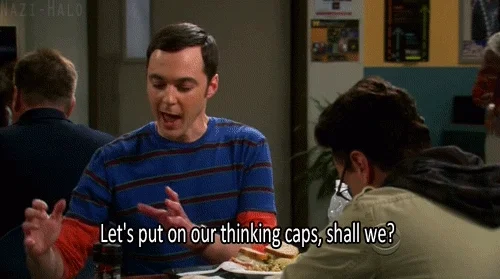Do you ever find that you're stuck in one way of thinking?
Perhaps you're always optimistic, or you're always too careful. What is your first instinct?
When you think about an issue, consider another side. Sometimes, it takes a really simple change to look at a problem in a new way.
By taking different viewpoints, we can make better decisions. Get ready to put on the Six Thinking Hats!

What is the Six Thinking Hats Exercise?
The Six Thinking Hats is a thinking and discussion technique to help you look at decisions from a number of perspectives andchallenge the way you think!
Watch the video below for a brief explanation of what each hat represents.
The Different Styles of Thinking
During the exercise, each hat focuses on a different way to think about a problem. This is a “parallel thinking process” considering all points of view.

Blue Hat
the "organizing" hat
keeps main objectives clear
directs activities
controls the thinking process

White Hat
the "information" hat
looks for facts and data
considers missing knowledge
remains objective & without judgment

Red Hat
the "emotion" hat
focuses on intuition & gut reaction
asks how others will react emotionally
considers feelings in decision-making

Yellow Hat
the "positive" hat
keeps an optimistic outlook
looks for the good points
sees benefits and values

Green Hat
the "creative" hat
explores possibilities & solutions
challenges the status quo
shares ideas openly & without criticism

Black Hat
the "judgment" hat
sees weak points & problems
critical, skeptical, cautious & defensive
considers risks & worst-case scenarios
The Six Hats in Action
When it's time to discuss or think about a problem, try the hats on your own, or give everyone on your team a different hat.
When in groups, people will then agree on how they will think according to their hat, and then they do the thinking before the discussion
Discussions begin and end with a blue hat. Each gets around two minutes to speak. It's fine to use the hats in a way that works best for you or your group.
Here are some examples of how each hat might approach the exercise:

Blue Hat
Manage the thinking & discussion process:
Let's lay down some rules of order.

White Hat
Focus on objective data:
We're after the facts, and just the facts!

Red Hat
Express the emotional perspective:
That's exciting but it makes me nervous!

Yellow Hat
Consider the benefits:
It's not perfect, but it has upsides!

Green Hat
Look at alternative solutions:
What haven't we tried yet?

Black Hat
Be the "devil's advocate":
I can see at least three problems here.
Benefits of Six Thinking Hats

This technique helps:
see all sides of a situation
use a systematic approach
consider new or unusual angles
spot opportunities, not problems
think clearly and objectively

In meetings, the Six Hats can:
minimize conflicts
promote collaboration
improve discussions
generate better ideas
save time and energy
How You Can Use this Technique
The Six Thinking Hats help with:
problem-solving
creative thinking
decision-making
team communication
project management
Take Action
Work and life are full of issues, problems, decisions, and opportunities. How we look at them makes all the difference.

You can learn, practice, and apply the Six Thinking Hats in any area of your life. They can help you see all sides of an issue with more focus. Each perspective helps.
The next time you're faced with a problem:
Your feedback matters to us.
This Byte helped me better understand the topic.

